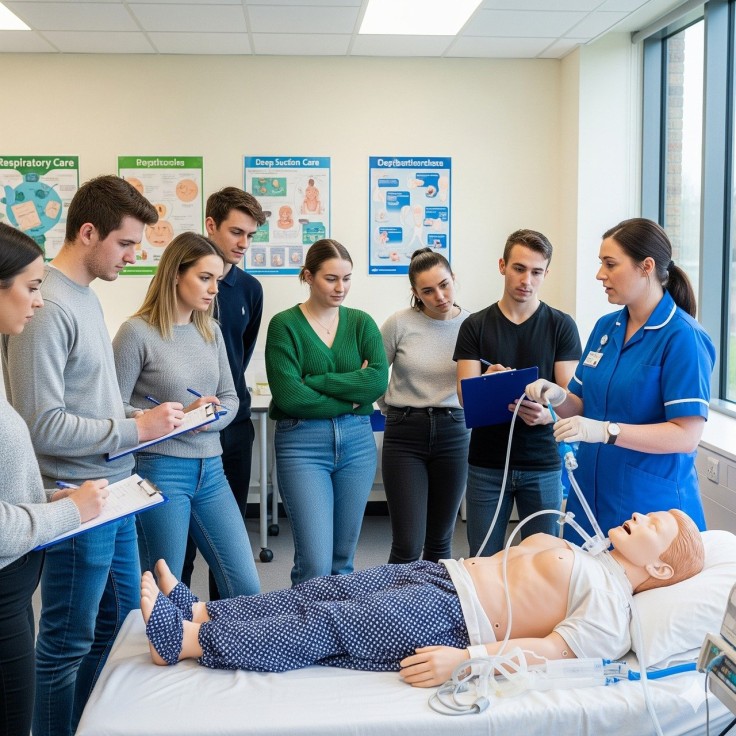US Creates Two-Tier Student Loan System: $200K for Doctors and Lawyers, $100K for Nurses and Others
By
The Trump Administration is defending controversial new federal student loan limits that create a two-tiered system for graduate students, designating medicine, dentistry and law as "professional degrees" eligible for $200,000 in borrowing while capping nursing and most other graduate programs at $100,000.
The distinction, stemming from President Trump's One Big Beautiful Bill Act, has sparked fierce debate about which professions deserve elevated status in federal lending policy—and whether the new limits will help or harm America's ongoing nursing shortage crisis.
In a "Myth vs. Fact" press release issued this week, the US Department of Education pushed back against criticism that the policy undervalues nurses, insisting the "professional degree" designation is merely an internal classification for loan limits rather than a judgment about professional importance.
The New Lending Landscape
Under regulations being developed following the Act's passage, a negotiating committee convened by the Department of Education has proposed designating Medicine (M.D.), Dentistry (D.D.S./D.M.D.), Law (L.L.B./J.D.), and several other high-cost programs as eligible for a $200,000 borrowing limit over a student's lifetime.
Students pursuing degrees in other graduate or doctoral programs—including nursing, education, social work, and most academic disciplines—would be capped at $100,000 in federal loans.
Undergraduate students are generally not affected by the new lending limits, which target graduate education specifically.
The policy change reflects growing concern about graduate student debt, which has ballooned in recent years. Graduate students now receive more than half of all new federal student loans originated annually, and graduate student loans comprise half of the outstanding $1.7 trillion federal student loan portfolio.
Why the Distinction Matters
The debate centers on what constitutes a "professional degree" worthy of higher borrowing limits—and by extension, which careers the federal government views as justifying greater educational investment.
Medical, dental and law schools have historically been the most expensive professional programs, with total costs frequently exceeding $200,000 even at public institutions. Students in these programs argue they need higher loan limits simply to complete their education.
However, advanced nursing programs—particularly nurse practitioner, nurse anesthetist, and nurse midwife degrees—also carry substantial costs while producing healthcare professionals critical to addressing America's persistent doctor shortages, especially in rural and underserved areas.
Excluding nursing from the elevated borrowing category has prompted accusations that the administration is devaluing nursing as a profession, particularly given the acute nursing shortages exposed during the COVID-19 pandemic.
The Department's Defense
The Department of Education insists the controversy is overblown, pointing to data showing that 95% of nursing students borrow below the annual loan limits and therefore won't be affected by the new caps.
"The definition of a 'professional degree' is an internal definition used by the Department to distinguish among programs that qualify for higher loan limits, not a value judgement about the importance of programs," the department stated. "It has no bearing on whether a program is professional in nature or not."
The department further emphasized that the loan limits apply only to graduate nursing programs and have no impact on undergraduate nursing education—including four-year bachelor's degrees and two-year associate degrees. Approximately 80% of the nursing workforce does not hold a graduate degree, meaning the vast majority of nurses will continue their education unaffected by the new policy.
Moreover, department officials argue that placing caps on loans will push graduate nursing programs to reduce their costs, ensuring that nurses aren't "saddled with unmanageable student loan debt."
The Tuition Inflation Argument
Central to the administration's defense is an economic argument about tuition inflation. Since 2007, graduate and professional students have been able to borrow up to the full cost of attendance—essentially unlimited federal borrowing to cover whatever institutions charge.
Education policy analysts have long argued this unlimited borrowing creates perverse incentives. Universities can raise tuition aggressively knowing students can borrow whatever amount is needed, creating an inflationary spiral that leaves graduates with crushing debt loads even for credentials with modest earnings potential.
"This has allowed colleges and universities to dramatically increase tuition rates, even for credentials with modest earnings potential, which has saddled too many borrowers with debts they find difficult to repay," the department noted.
The department cited early evidence suggesting the Act's annual federal loan caps are already "reining in inflated prices at graduate programs across the country," though the policy is too new for comprehensive data analysis.
By this logic, capping nursing program borrowing at $100,000 should force institutions to reduce tuition rather than pricing programs beyond students' reach—ultimately benefiting nurses by preventing debt accumulation that many find difficult to repay on nursing salaries.
The Counterargument: Nursing Shortage Concerns
Critics counter that even if 95% of current nursing students borrow below the cap, the new limits could discourage students from pursuing advanced nursing education at a time when the healthcare system desperately needs more advanced practice nurses.
Nurse practitioners, nurse anesthetists, and clinical nurse specialists increasingly provide primary and specialized care, particularly in rural areas and underserved communities where physician shortages are most acute. These advanced roles require graduate education, and anything that makes that education harder to finance could exacerbate workforce shortages.
Additionally, the 5% of nursing students who do borrow above current levels may represent students at the most expensive programs or those pursuing the most advanced specializations—precisely the nurses the healthcare system most needs.
There's also concern about the symbolic message. Designating doctors and lawyers as "professional" while excluding nurses—even if intended as mere administrative classification—reinforces historical hierarchies within healthcare that nursing advocates have worked decades to dismantle.
The Rulemaking Process
Importantly, the Department of Education has not yet published a proposed or final rule. The "professional student" definition emerged from a negotiated rulemaking committee that unanimously agreed to the proposed framework, but public comment periods remain before implementation.
The department emphasized it "has not prejudged the rulemaking process and may make changes in response to public comments," suggesting the final policy could differ from current proposals if public pressure proves sufficient.
The department solicited feedback during the negotiated rulemaking process and will provide another opportunity for public comment when it publishes the proposed rule early next year.
This means nursing organizations, healthcare policy advocates, and other stakeholders still have opportunities to influence the final policy before it takes effect.
Broader Implications
The controversy over professional degree definitions reflects deeper tensions in American higher education policy about cost, access, and value.
Graduate education has become increasingly expensive across virtually all fields, yet employment outcomes and earning potential vary dramatically. A law degree from a top-tier school can lead to six-figure starting salaries; a social work master's degree often leads to careers paying under $50,000 annually.
Should federal lending policy treat these equally? Or should limits reflect realistic earnings potential and career trajectories?
The challenge is that crude categories like "professional degree" inevitably create winners and losers, often in ways that don't align with social priorities like addressing healthcare workforce shortages.
The Bigger Picture: Graduate Debt Crisis
Stepping back from the specific controversy over nursing versus medicine, the fundamental issue is the explosive growth of graduate student debt and whether unlimited federal borrowing has enabled unsustainable tuition increases.
Graduate students now carry enormous debt loads that often take decades to repay. The question is whether loan caps will force institutions to reduce costs or simply restrict access to advanced education for students without wealthy families to supplement federal borrowing.
Early evidence on the Act's impact remains limited, making it difficult to assess whether the administration's optimistic predictions about tuition reductions will materialize or whether loan caps will instead reduce graduate enrollment and worsen workforce shortages in critical fields.
Looking Ahead
As the Department of Education moves forward with rulemaking, several key questions remain:
- Will public pressure during the comment period lead to changes in the professional degree definition?
- Will the predicted tuition reductions materialize, or will programs simply become less accessible?
- How will nursing organizations mobilize to influence the final rule?
- What will be the long-term impact on nursing workforce development?
The answers will shape not just student borrowing but also workforce availability in critical sectors, access to advanced education, and the symbolic valuation of different professions within American society.
For now, the debate continues over what makes a degree "professional" enough to merit $200,000 in federal loans—and whether that designation should extend beyond the traditional triumvirate of medicine, dentistry and law to include the nurses, teachers, and other graduate-educated professionals America depends upon.
The final rule, expected early next year, will provide the definitive answer—though the debate over whether that answer is wise policy will likely continue long after.
© 2025 University Herald, All rights reserved. Do not reproduce without permission.








